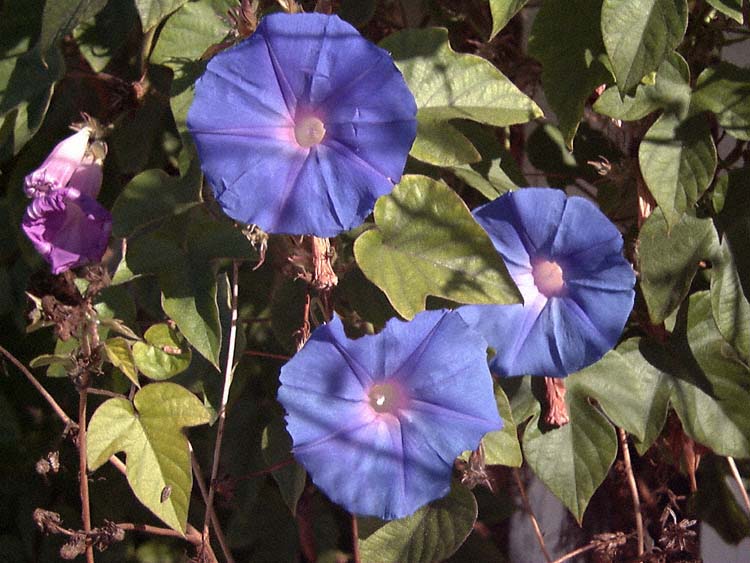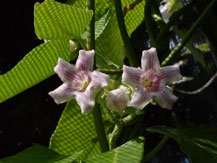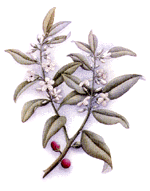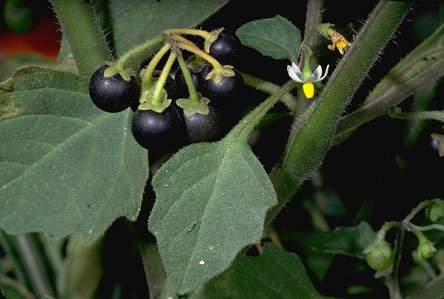
|
Monkshood (Aconitum species, especially Aconitum
napellus). All parts of these herbaceous perennials are very
poisonous. It is even dangerous for children to play with
the attractive hooded delphinium-like-flowers because it
seems that toxic substances can be absorbed through the
skin, especially delicate areas such as around the mouth.
Monkshood grows in all parts of the North Island, especially
colder areas, but is rarer than delphiniums.

Back to Top
|

|
Morning glories (Ipomoea species). The seeds of some
species contain very powerful hallucinogenic drugs. As with
other hard seeds, the effects are only evident if they are
crushed or chewed before being swallowed.

Back to Top
|

|
Moth plant or cruel plant (Araujia sericifera). The white
latex in all parts of this plant is poisonous, so the green
choko-like fruits of this climber should not be put in the
mouth.

Back to Top
|

|
Ngaio (Myoporum species). These very poisonous plants
mainly grow near the sea, either wild or in cultivation.
They are easily identified by the numerous pale leaf spots
seen when held to the light, and by the purple berries. Both
the native ngaio (M. laetum) and Australian ngaio (M.
insulare) should be regarded as equally harmful.

Back to Top
|

|
Nightshades (some Solanum species). Species of Solanum
should be treated with great caution since they all contain
poisonous compounds to some extent, particularly in any
green parts. The main species of concern for children are:
poroporo, potato, bittersweet, Jerusalem cherry and hairy,
woolly and black nightshades.

Back to Top
|
|
|
|
|
|
|
|
|
|
|
|
|
|
|
|